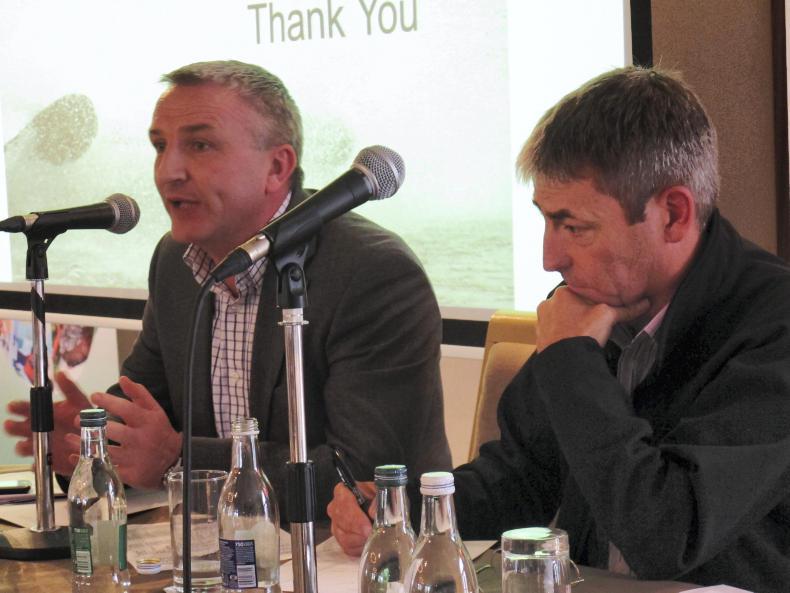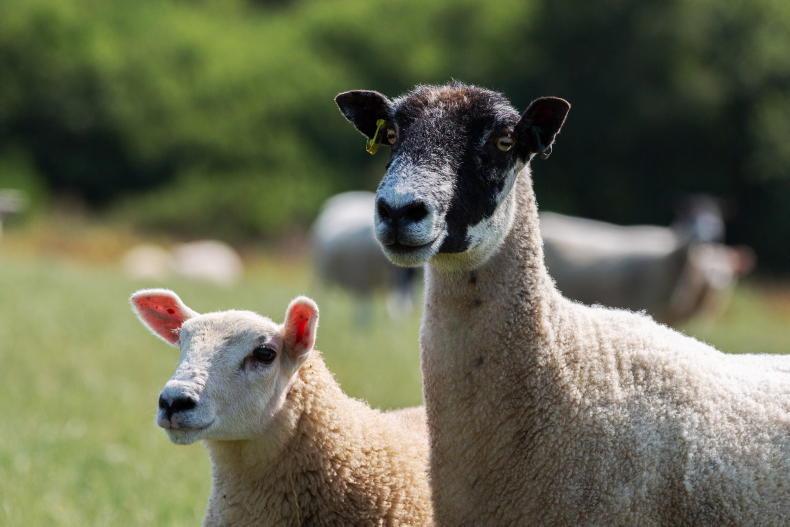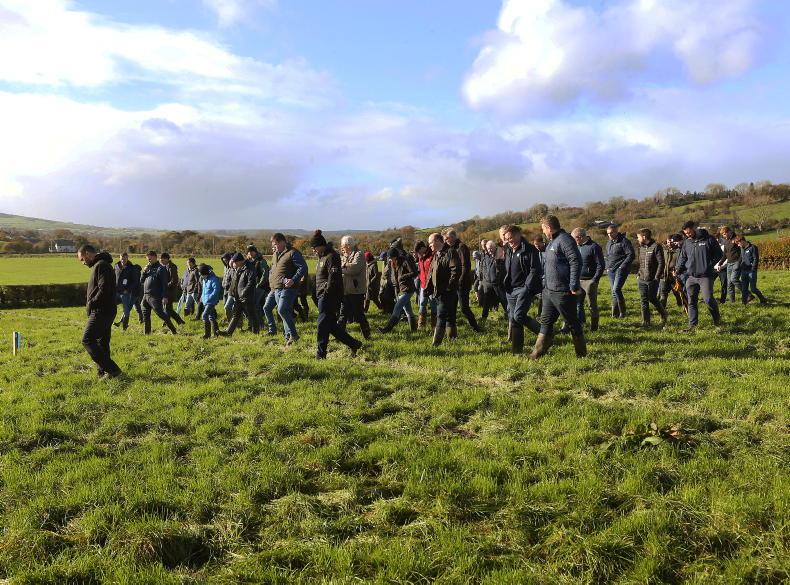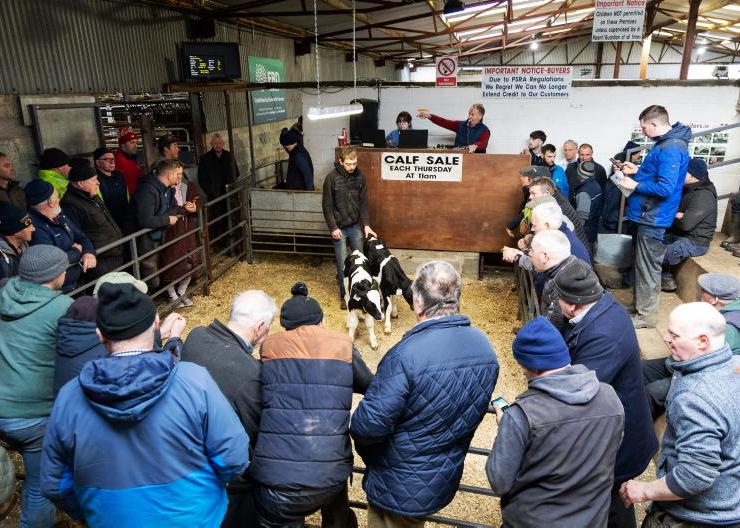The New Zealand environment and agriculture minister has unveiled a new suite of rules for farmers and a NZ$700m (€400m) package to help implement changes.
One of the most important rule changes sees the introduction of a 190kg/ha cap on bag nitrogen. In this article, we talk to a New Zealand farmer and consultant about what the cap might mean.
Nitrogen usage
Usage of bag nitrogen has increased a lot in New Zealand over the last 15 years. NZ stats shows nitrogen in urea fertiliser applied to land up from 147,000t in 2002 to 277,000t in 2017. In total, the New Zealand statistics show over 429,000t of nitrogen were used in 2015, which is up from 59,000t in 1990.
Canterbury (29%) and Waikato (20%) are the two regions that spread the most nitrogen to maximise grass growth (see map). Hence, both will be the regions most affected by this new cap.
We assume nitrogen usage per region will be similar as the trend data on urea as per the map.
Canterbury most affected - more meal less nitrogen
Ivan Lines says his client average in Southland for nitrogen applications are more moderate than much of the rest of the country already.
For example, he estimates his client average is 195kg N/ha per annum (and this would be much higher than the district average, estimated at 160kg N/ha), so a drop to 190kg N/ha will have minimal impact.

Run-off from collecting yards is a key source of nutrients on New Zealand dairy farms.
However, in Canterbury, typical nitrogen applications are much higher, so will have a more marked effect on pasture production.
He said: “Generally there is good acceptance of the 190kg N/ha rule – in Southland anyway. For my clients, the range in application last year was 50kg N/ha to 220kg N/ha – average 195kg N/ha. We have been thinking about management implications and think we might change nitrogen application management to less in the spring and more use of concentrates. We will potentially move to more nitrogen and less concentrates in the summer and autumn”.
The range in application last year was 50kg N/ha to 220kg N/ha – average 195kg N/ha
The detail on using nitrogen for winter feed is less clear as of yet. Remember, a large proportion of bag nitrogen in Ireland goes into growing winter feed, as stock are housed for three to four months minimum and up to six months in parts. Many New Zealand farmers don’t have to do this.
Our understanding as regards winter feed and where the New Zealand restrictions start and end in the proposed legislation is a bit vague at the moment. At this stage it is only a draft by the minister and there will be some refinements. For example, the proposal says all crop paddocks are to be sown out within one month of being eaten. This is clearly impossible to achieve in Southland and will destroy soil structure and cause environmental issues with cultivation of wet soil. Whether the cap applies to pasture and winter crop is not clear yet.

Ivan Lines (right), New Zealand dairy consultant speaking at an Irish meeting.
Ivan Lines works as a New Zealand agricultural consultant based on the South Island working with clients mainly in Southland, which many farmers equate to the region closest in climate to Ireland.
Top management needed
to achieve output with
reduced nitrogen
Alistair Rayne farms on irrigated land in Canterbury. He says: “The N limit will affect some more than others. We are harvesting about 17t DM/ha on irrigated Canterbury farms using close to 190kg of nitrogen per hectare on the dairy platform, which I will caveat later. We have greatly reduced nitrogen use over time from when it was closer to 300kg/ha. In that time, the soil organic matter will have improved from a low base, which has helped.
“Imported milking supplements will also be significantly higher on the average farm, while we are at around nil except using beet (grown on the platform) in the autumn transition.”
How we manage to stay at around 190kg/ha is because we usually have 10% of our farm area in fodder beet and we don’t spread N on about 10% of area where stock camp
Some New Zealanders are very concerned over the new limit. They argue the government has now diverged from its policy of setting outcome-based targets which leave the farmer to manage the inputs, to now setting an input cap. Nitrogen is one of many factors and, for example, soil type or topography can render that target too high or too low.
Another key issue some raise is that there is of course N in imported feeds, along with higher GHG, so pushing grass output down will work against GHG and overall sustainability.
Alistair explains: “How we manage to stay at around 190kg/ha is because we usually have 10% of our farm area in fodder beet and we don’t spread N on about 10% of area where stock camp (near paddock entrances and lying areas). Also, we don’t spread about 12% of the area where effluent is spread.
“That said, we are harvesting approximately 17t DM/ha albeit on an irrigated farm and with a laser focus on pasture utilisation and a strong desire to actively reduce costs.”
In terms of the future: “Our plan will be to use more protected nitrogen. On milking cow forages, we have seen nothing convincing yet that is repeatable, simple and profitable and fits with the pasture curve.”
Alistair and Sharon Rayne farm on irrigated land in Canterbury, New Zealand, which will be one of the areas most affected by restrictions on nitrogen.
The devil is in the detail on the nitrogen cap. The full detail on the New Zealand cap is not known. It is very hard to use a broad brush approach on inputs such as nitrogen given the variation between farms and within farms. This holds true whether in New Zealand or Ireland.
The Kiwi government is hoping the 190kg/ha maximum might work for New Zealand to improve water quality. It may work. It may also work for the farmers given they have irrigation, little silage requirement and large-scale land blocks. I understand about 2,000 of 11,500 dairy farmers in New Zealand will be affected.
The key for Ireland and New Zealand is to try to help the environment without affecting farm profits
I’ve no doubt a similar strategy would significantly reduce grass yields on many Irish farms. That is not to absolve Irish farmers from the need to innovate and change with alternative forages, mixed swards and different nitrogen types, etc.
Aside from fertilisers, other sources of nutrients in agriculture include animal feeds and nitrogen fixation by legumes. Some in New Zealand have raised a concern that putting a cap on bag nitrogen might push higher feeding rates. This is a valid concern.
The key for Ireland and New Zealand is to try to help the environment without affecting farm profits. Altering the production system that potentially reduces profits and maybe causes even more environmental damage would be a serious own goal.
Read more
Cap on bag nitrogen for New Zealand farmers
Dairy markets: New Zealand milk production continues slowdown
The New Zealand environment and agriculture minister has unveiled a new suite of rules for farmers and a NZ$700m (€400m) package to help implement changes.
One of the most important rule changes sees the introduction of a 190kg/ha cap on bag nitrogen. In this article, we talk to a New Zealand farmer and consultant about what the cap might mean.
Nitrogen usage
Usage of bag nitrogen has increased a lot in New Zealand over the last 15 years. NZ stats shows nitrogen in urea fertiliser applied to land up from 147,000t in 2002 to 277,000t in 2017. In total, the New Zealand statistics show over 429,000t of nitrogen were used in 2015, which is up from 59,000t in 1990.
Canterbury (29%) and Waikato (20%) are the two regions that spread the most nitrogen to maximise grass growth (see map). Hence, both will be the regions most affected by this new cap.
We assume nitrogen usage per region will be similar as the trend data on urea as per the map.
Canterbury most affected - more meal less nitrogen
Ivan Lines says his client average in Southland for nitrogen applications are more moderate than much of the rest of the country already.
For example, he estimates his client average is 195kg N/ha per annum (and this would be much higher than the district average, estimated at 160kg N/ha), so a drop to 190kg N/ha will have minimal impact.

Run-off from collecting yards is a key source of nutrients on New Zealand dairy farms.
However, in Canterbury, typical nitrogen applications are much higher, so will have a more marked effect on pasture production.
He said: “Generally there is good acceptance of the 190kg N/ha rule – in Southland anyway. For my clients, the range in application last year was 50kg N/ha to 220kg N/ha – average 195kg N/ha. We have been thinking about management implications and think we might change nitrogen application management to less in the spring and more use of concentrates. We will potentially move to more nitrogen and less concentrates in the summer and autumn”.
The range in application last year was 50kg N/ha to 220kg N/ha – average 195kg N/ha
The detail on using nitrogen for winter feed is less clear as of yet. Remember, a large proportion of bag nitrogen in Ireland goes into growing winter feed, as stock are housed for three to four months minimum and up to six months in parts. Many New Zealand farmers don’t have to do this.
Our understanding as regards winter feed and where the New Zealand restrictions start and end in the proposed legislation is a bit vague at the moment. At this stage it is only a draft by the minister and there will be some refinements. For example, the proposal says all crop paddocks are to be sown out within one month of being eaten. This is clearly impossible to achieve in Southland and will destroy soil structure and cause environmental issues with cultivation of wet soil. Whether the cap applies to pasture and winter crop is not clear yet.

Ivan Lines (right), New Zealand dairy consultant speaking at an Irish meeting.
Ivan Lines works as a New Zealand agricultural consultant based on the South Island working with clients mainly in Southland, which many farmers equate to the region closest in climate to Ireland.
Top management needed
to achieve output with
reduced nitrogen
Alistair Rayne farms on irrigated land in Canterbury. He says: “The N limit will affect some more than others. We are harvesting about 17t DM/ha on irrigated Canterbury farms using close to 190kg of nitrogen per hectare on the dairy platform, which I will caveat later. We have greatly reduced nitrogen use over time from when it was closer to 300kg/ha. In that time, the soil organic matter will have improved from a low base, which has helped.
“Imported milking supplements will also be significantly higher on the average farm, while we are at around nil except using beet (grown on the platform) in the autumn transition.”
How we manage to stay at around 190kg/ha is because we usually have 10% of our farm area in fodder beet and we don’t spread N on about 10% of area where stock camp
Some New Zealanders are very concerned over the new limit. They argue the government has now diverged from its policy of setting outcome-based targets which leave the farmer to manage the inputs, to now setting an input cap. Nitrogen is one of many factors and, for example, soil type or topography can render that target too high or too low.
Another key issue some raise is that there is of course N in imported feeds, along with higher GHG, so pushing grass output down will work against GHG and overall sustainability.
Alistair explains: “How we manage to stay at around 190kg/ha is because we usually have 10% of our farm area in fodder beet and we don’t spread N on about 10% of area where stock camp (near paddock entrances and lying areas). Also, we don’t spread about 12% of the area where effluent is spread.
“That said, we are harvesting approximately 17t DM/ha albeit on an irrigated farm and with a laser focus on pasture utilisation and a strong desire to actively reduce costs.”
In terms of the future: “Our plan will be to use more protected nitrogen. On milking cow forages, we have seen nothing convincing yet that is repeatable, simple and profitable and fits with the pasture curve.”
Alistair and Sharon Rayne farm on irrigated land in Canterbury, New Zealand, which will be one of the areas most affected by restrictions on nitrogen.
The devil is in the detail on the nitrogen cap. The full detail on the New Zealand cap is not known. It is very hard to use a broad brush approach on inputs such as nitrogen given the variation between farms and within farms. This holds true whether in New Zealand or Ireland.
The Kiwi government is hoping the 190kg/ha maximum might work for New Zealand to improve water quality. It may work. It may also work for the farmers given they have irrigation, little silage requirement and large-scale land blocks. I understand about 2,000 of 11,500 dairy farmers in New Zealand will be affected.
The key for Ireland and New Zealand is to try to help the environment without affecting farm profits
I’ve no doubt a similar strategy would significantly reduce grass yields on many Irish farms. That is not to absolve Irish farmers from the need to innovate and change with alternative forages, mixed swards and different nitrogen types, etc.
Aside from fertilisers, other sources of nutrients in agriculture include animal feeds and nitrogen fixation by legumes. Some in New Zealand have raised a concern that putting a cap on bag nitrogen might push higher feeding rates. This is a valid concern.
The key for Ireland and New Zealand is to try to help the environment without affecting farm profits. Altering the production system that potentially reduces profits and maybe causes even more environmental damage would be a serious own goal.
Read more
Cap on bag nitrogen for New Zealand farmers
Dairy markets: New Zealand milk production continues slowdown












SHARING OPTIONS